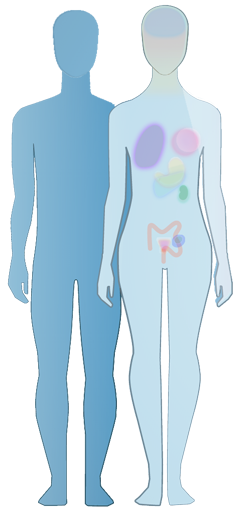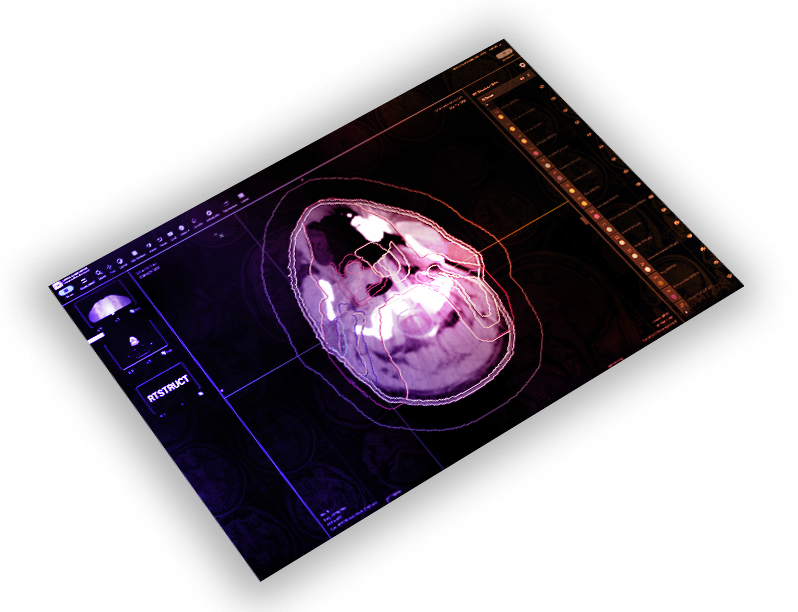Imaging Data Commons
(IDC)Overview
NCI Imaging Data Commons (IDC) is a cloud-based repository of publicly available cancer imaging data co-located with analysis and exploration tools. IDC is a node within the broader NCI Cancer Research Data Commons (CRDC) infrastructure that provides secure access to a large, comprehensive, and expanding collection of cancer research data.
- >85 TB of data: As of Spring 2025, IDC contains radiology, brightfield (H&E) and fluorescence slide microscopy images, along with image-derived data (annotations, segmentations, quantitative measurements) and accompanying clinical data.
- Free: All of the data in IDC is publicly available: no registration, no access requests.
- Commercial-friendly: >95% of the data in IDC is covered by the permissive CC-BY license, which allows commercial reuse (small subset of data is covered by the CC-NC license); each file in IDC is tagged with the license to make it easier for you to understand and follow the rules.
- Cloud-based: All the data in IDC is available from both Google and AWS public buckets: fast and free to download, no out-of-cloud egress fees.
- Harmonized: All the images and image-derived data in IDC are harmonized into standard Digital Imaging and Communication in Medicine (DICOM) format.
IDC ingests and harmonizes collections from a variety of sources: The Cancer Genome Atlas (TCGA), The Cancer Imaging Archive (TCIA), Clinical Proteomics Tumor Analysis Consortium (CPTAC), Childhood Cancer Data Initiative (CCDI), Human Tumor Atlas Network (HTAN), Lung Imaging Database Consortium (LIDC), NCI Quantitative Imaging Network (QIN), National Library of Medicine Visible Human Project (VHP), and National Lung Screening Trial Data (NLST).
IDC is as much about what you can do with the data as it is about the data itself! We maintain and actively develop a variety of tools that are designed to help you efficiently navigate, access, and analyze IDC data:
- Exploration: Start with the IDC Portal to get an idea of the data available.
- Visualization: Examine images and image-derived annotations and analysis results from the convenience of your browser using integrated OHIF, VolView, and Slim open source viewers.
- Programmatic access: Use idc-index python package to perform search, download, and other operations programmatically.
- Cohort building: Use IDC Portal, rich and extensive metadata available programmatically using the idc-index python package, or BigQuery SQL to subset IDC data and generate manifests. Save generated cohort manifests for subsequent download or archival.
- Download: Use your favorite S3 API client or idc-index to efficiently fetch any of the IDC files from our public buckets and download subsets of data defined by unique identifiers for collections, patients, image series, or by cohort manifests.
- Analysis: Conveniently access IDC files and metadata from the tools that are cloud-native, such as Google Colab or Looker, fetch IDC data directly into 3D Slicer using SlicerIDCBrowser extension, and experiment with the growing list of imaging AI models available in MHub.ai, which can operate directly on the DICOM data available from IDC.
Data Types
IDC contains various types of images and image-derived data harmonized using the DICOM standard:
- Clinical and preclinical imaging
- Radiological images (e.g., CT, MRI, PET)
- Digital pathology images
- Multispectral microscopy images
- Image annotations (e.g., planar and volumetric, regions of interest)
- Parametric maps derived from images (e.g., perfusion and diffusion maps)
- Measurements derived from the images (e.g., radiomics features for the annotated regions of interest)
- Expert assessments of the image findings (e.g., qualitative characterizations of lesion appearance)
Datasets
IDC includes imaging data from the following projects:
- The Cancer Genome Atlas (TCGA)
- The Cancer Imaging Archive (TCIA)
- Clinical Proteomics Tumor Analysis Consortium (CPTAC)
- Childhood Cancer Data Initiative (CCDI)
- Human Tumor Atlas Network (HTAN)
- Lung Imaging Database Consortium (LIDC)
- NCI Quantitative Imaging Network (QIN)
- National Library of Medicine Visible Human Project (VHP)
- National Lung Screening Trial Data (NLST)
Anatomical Sites
Data from the following organ sites, covered by the TCIA, will also populate the content of the IDC:
- Bladder
- Bone Marrow
- Brain
- Breast
- Colon
- Head and Neck
- Kidney
- Liver
- Lung
- Pancreas
- Prostate
- Rectum
- Skin
- Uterus

